Welcome to our first edition of a new weekly roundup. We’re calling it The Top 5.
It’s important stories from this week in running broken down quickly for you, and also discussed in a short podcast with some added insights. Listen or read—it’s up to you. Or both?
Word count: 1,438
Reading time: about 5 minutes
Coming soon: our podcasts will be available on your Apple Podcasts, Spotify, Google Podcasts, and others. We’ll provide links in a future newsletter. Thanks for listening and reading. Be sure to share with your running pals!
Let’s get into it.

1. Shalane Flanagan hangs up the racing flats
After 15 years of professional running, Shalane Flanagan announced on October 21 that she will be hanging up the racing shoes for good. The 38-year-old is one of the most decorated distance athletes in American history running in four Olympics (she claimed the 10,000m silver medal in Beijing), clinching a bronze at the 2011 World Cross Country Championships, and of course winning the 2017 New York City Marathon. She set American records in the indoor 3,000m and 5,000m, as well as the road 15K. That’s one heck of a career.
Flanagan, however, isn’t abandoning the sport entirely. She’ll continue her involvement with running as a full-time coach for the Bowerman Track Club in Portland, Oregon. And who knows, after commentating for Kipchogee’s sub 2:00 marathon, maybe she’ll continue to develop her broadcasting chops.
Why this matters:
Over the last 15 years, Flanagan has acted as a guiding light in the distance running scene—the sport’s “Luke Skywalker”, as Michael Doyle calls her. Flanagan’s dedication and advocacy for running has had a global impact. She successfully bridged the gap between track and road racing, helping to bring an American audience to the marathon; she’s inspired countless people to take up the sport; not to mention she’s written a cookbook, been interviewed on numerous talk shows, and has even been turned into an iconic meme.
Needless to say, we’re sorry to see her go. Particularly because this leaves a gaping vacuum in the world of women’s American distance running, both on a performance and advocacy level. Who, if anyone, will step up to fill it?
What to Look for Next:
While Flanagan’s announcement has received nothing but love from her fellow distance runners, they have to be thinking about the qualifying spot this leaves open for Tokyo 2020. Jordan Hasay is easily the fastest inheritor. Her personal best of 2:20:57 is actually a few seconds faster than Falanagan’s, and she is primed to be one of America’s most dominant runners. But Hasay dropped out of this year’s Chicago Marathon and is dealing with the ramifications of the Salazar scandal.
Runners like Amy Cragg and Sarah Hall are close behind with personal bests of 2:21 and 2:22, respectively. And Desiree Linden is always a fan favourite, but she’ll have to shed a few minutes from her best marathon time. And even if these women do start producing results on par with Flanagan will any of them be able to electrify an audience the way she did?
2. Mark Parker will step down as CEO of Nike
Mark Parker, the CEO of Nike announced that he will be stepping down in January. Parker has been with Nike for four decades, starting in 1979 as a shoe designer. This announcement comes after released emails revealed that Parker was aware of Alberto Salazar’s involvement with banned substances. Though, it is not clear whether this is the reason Parker is stepping down. He will be replaced in January by Nike board member John Donahoe, who is the former CEO of Ebay.
What this means:
At the moment, this changing of the guard leaves a lot of uncertainty. As a guy with a tech background, we assume Donahoe will continue Nike’s trend of moving its merchandise from brick and mortar retail shops to direct online sales. The company has slowly been making this transition over the last few years, evident in the fact that it is nearly impossible to find the 4% or Next% in store.


What to look for next:
If Nike moves all of its merchandise online, your local ma and pop running shops may take a major hit. Nike is a global leader in running merchandise and other brands tend to follow its lead. It doesn’t help that using direct online sales means that Nike gets 100% of the profits. So, if there’s a local running shop close to your heart, support it while you can.
3. The strange case of David Freake
An unusual doping ban surfaces here in Canada: a sub-elite from the tight-knit running community in Newfoundland was popped for doping and given a four-year ban. He initially told the CBC it was because he’d taken a nasal decongestant. Turns out, he had three different drugs in his system, including a toxic substance used for weight loss, a performance enhancer known to also cause cancer, and EPO.
Why this matters:
Freake had DNFed at the race where he was caught back in May (the Ottawa Marathon). Why a non-elite runner who stepped off the course was tested is curious. There’s always been a fear that more non-elite level athletes are doping than we’d like to admit.
What to look for next:
There are many unanswered questions in this rather odd case. It seems as much a cry for help as it does an athlete attempting to gain an edge.

4. Was this the 🐐 season in distance running history?
A wild, controversial and fascinating World Championships in Doha
Keninisa Bekele ran a 2:01 in Berlin
Kipchoge runs 1:59 in Vienna, trigging a NBA season’s worth of 🔥takes about those AlphaFly shoes
Brigid Kosgei smokes Paula Radcliffe’s seemingly impossible-to-beat world record in Chicago
Fast races in Toronto and Amsterdam
And New York hasn’t even happened yet!
That’s a lot of content for running fans to have devoured in less than two months. It’s going to be hard to top that.
Why this matters:
That’s just it. Is this the apex of distance running for a generation, and like the ‘90s, are we headed for another long winter when it comes to the popularity of running. Or will 2020, an Olympic year, continue this incredible streak of thrilling running-as-entertainment? Arguably the two most impressive marathons ever run happened on the same damn weekend. That’s nuts.
What’s next:
Surely, multiple athletes, emboldened by Bekele, Kipchoge and Kosgei’s aggressive approach to marathoning, will attack the sub-two-hour barrier in 2020 on fast courses like London, Chicago and Berlin. One thing to keep a close eye on: how Kipchoge and others talk about the Olympics leading up to next summer. Will these athletes, at the peak of their powers, run a typically much slower (and riskier) Olympic race, or will they skip their shot at gold for a crack at a pure sub-two on a legit course?
5. For the first time ever, three 🇨🇦 women will be running an Olympic marathon
As of last Sunday, three women have achieved the Canadian Olympic marathon standard in the Tokyo 2020 qualification period. This means Athletics Canada could, for the first time in history, send three women to the same Olympic Games.
Who they are:
Dayna Pidhoresky - 2:29:03 - 2019 Canadian marathon champion
Rachel Cliff - 2:26:56 - Canadian marathon record holder
Lyndsay Tessier - 2:30:47 - ninth at World Athletics Championship marathon


Why this matters:
Athletics Canada sent three men to the 2012 Olympics (Reid Coolsaet, Dylan Wykes and Eric Gillis) but NEVER three women. Producing three internationally competitive athletes in the same event could be another sign that Canada is becoming a major player in world athletics, after finishing ninth in the overall medal rankings at the IAAF World championship earlier this fall.
What’s next:
For now, only Pidhoresky has punched her ticket to Tokyo, as she has achieved standard AND has won the Canadian marathon trials (the only surefire way of making the team.) Tessier and Cliff could be selected to the team as additional athletes on the final nomination meeting of July 2, 2020.
More on the Canadian Olympic marathon selection process here.
Runners other than Tessier and Cliff (like Canadian trials runner-up Emily Setlack and 2016 Olympian Krista Duchene) could be added to the list of additional athletes and become eligible for selection if they achieve standard before May 31, 2020.
If more than three women become eligible, the decision of who gets spots two and three rests on the shoulders of Athletics Canada.






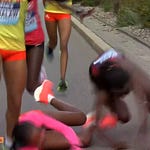

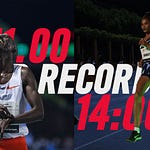
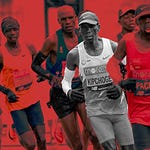

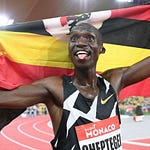
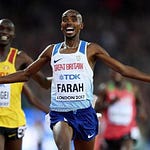
Share this post